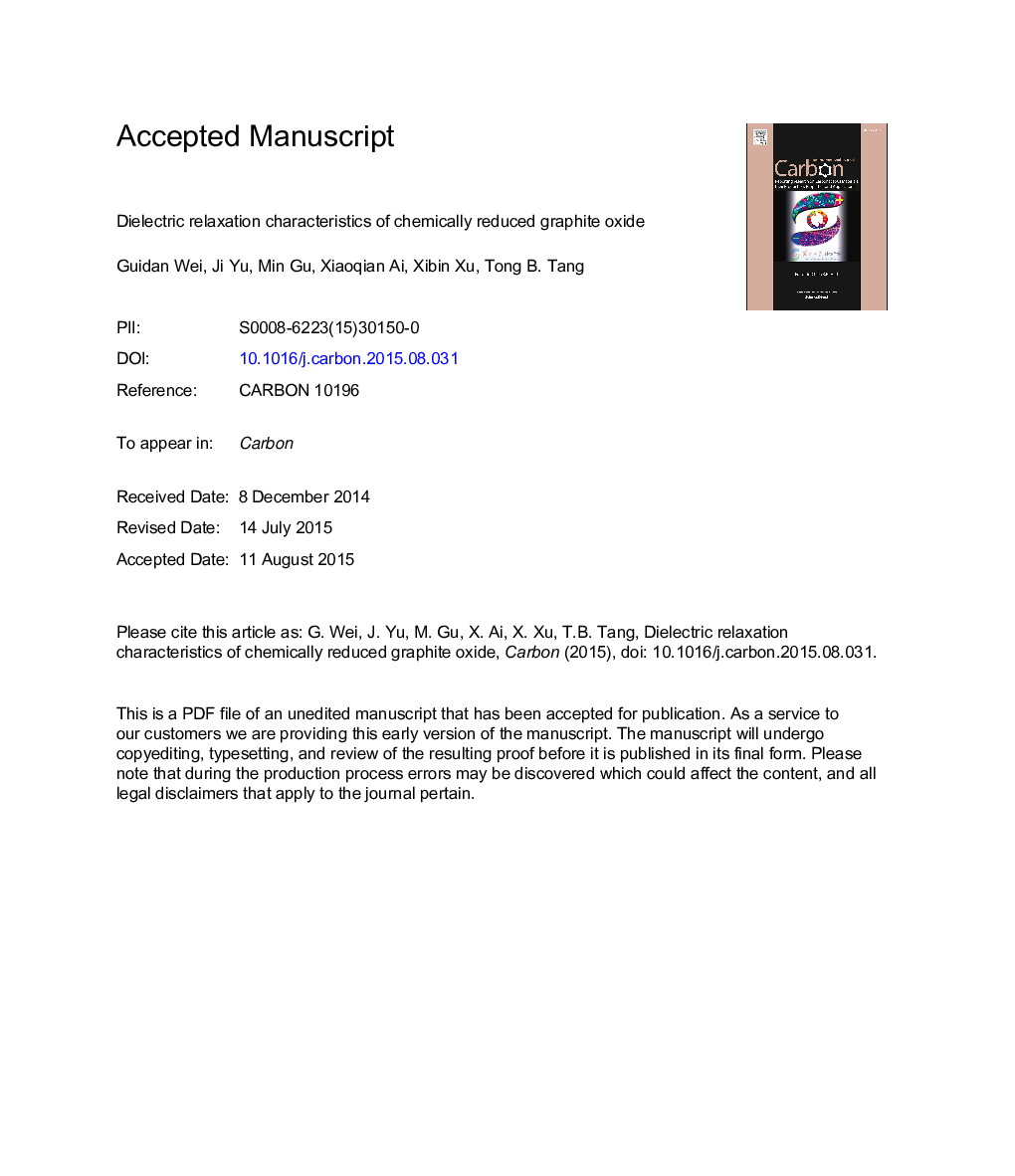| Article ID | Journal | Published Year | Pages | File Type |
|---|---|---|---|---|
| 7851168 | Carbon | 2015 | 26 Pages |
Abstract
Graphite oxide of various degrees of dehydration or chemically reduced with different concentrations of sodium borohydride have been synthesised. Samples were characterised with X-ray diffractometry and infrared spectroscopy, then studied using Raman, X-ray photoelectron (XPS), nuclear magnetic resonance (NMR) and impedance spectroscopies. The trend in their concentrations of epoxy, hydroxyl group and sp2 carbon, as calculated from XPS and NMR data, agreed with their vacancies concentrations as deduced from Raman spectra. Analysis of observed complex impedance peaks points to three different relaxation processes. One, obviously, is the rotation of intercalated water. The other two involve dipoles originating from polar hydroxyl groups. Loss peaks seen in less reduced graphite oxide have an activation energy of 0.16 eV, and are ascribed to the breaking of a hydrogen bond (-O-H···O<) between a hydroxyl attached to a carbon grid and an epoxy group on the adjacent carbon grid. The other, displayed in more reduced samples and of 0.08 eV in activation energy, derive from hydrogen bonds (-O-Hâ¦Ï) between hydroxyls and Ï electrons on adjacent carbon grids.
Related Topics
Physical Sciences and Engineering
Energy
Energy (General)
Authors
Guidan Wei, Ji Yu, Min Gu, Xiaoqian Ai, Xibin Xu, Tong B. Tang,
